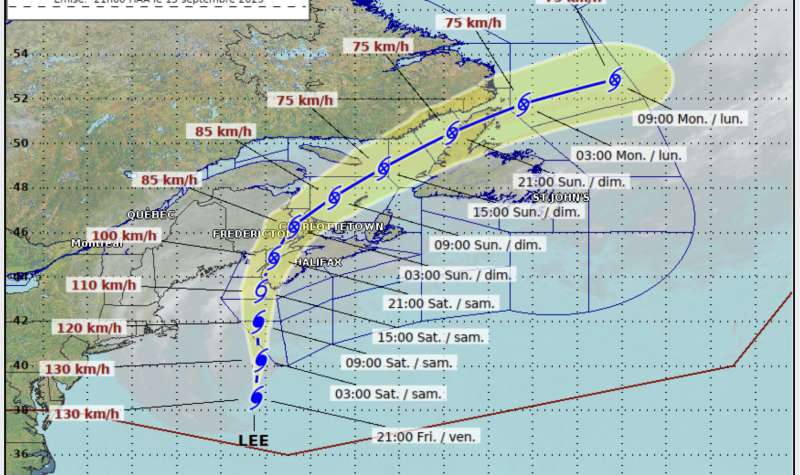Utility officials say they have learned lessons over the past year and are better prepared to deal with the impacts of Hurricane Lee.
At a news conference Friday, representatives of Nova Scotia Power, Bell and Eastlink joined emergency management officials, Environment Canada meteorologists and Minister John Lohr to describe how they have anticipated the needs ahead of the storm as well as their plans for recovery.
Following Hurricane Fiona in 2022, several parts of the province were without cell service for an extended period of time.
Representatives from both Eastlink and Bell say their respective companies have taken several steps to prevent outages and keep any down time to a minimum.
Those include spending tens of millions of dollars to ensure they have generators in key places, securing fuel to keep their emergency fleets on the roads, and ensuring personnel from out of province are ready to provide support should they be called upon.
Geoff Moore with Bell Canada says Nova Scotians can expect to see improvements in the aspects of their service that can be predicted and controlled, but there are situations that will arise for which they can’t plan.
“We can control the cell site, we can control fuel, we can control having batteries on sites, we can control our response, what we can't control is this damage, excuse me, the damage the storm does. So if there's fiber cables broken, if there's you know, poles down that are impacting that connection, or that fiber connection, excuse me, to the cell site, those are things that I can't plan for,” said Moore.
“I can plan to respond, make sure I've got the right resources, the right equipment, the right material, but I don't know where that's going to happen so we're very much dependent, if you wish, on what the storm does and where it does it.”
Nova Scotia Power says over 10,000 trees were trimmed following Fiona. The utility says it spent $32 million in 2023 on tree trimming and plans to increase that amount to $40 million in 2024.
Environment Canada Meteorologist Bob Robichaud says the hurricane is expected to become a post tropical storm by the time it makes landfall in Nova Scotia.
Robichaud says some people may have the mistaken idea that the change in designation to post tropical storm may mean a less powerful event.
“What we mean by post tropical is essentially the structure of the storm is different. It says nothing about the intensity,” said Robichaud. “So, we expect this storm, as it approaches and as it gets close to the coastline, to be very close to hurricane strength. We're thinking just below, but it will still be a large storm that’s very near hurricane strength at the time.”
The winds are forecast to reach speeds up to 120km/h by the time Hurricane Lee reaches Nova Scotia Saturday morning. The region could see up to 150mm of rain beginning Friday and continuing throughout Saturday.
Rain, wind and storm surge warnings have been issued for the South Shore, including Queens County.
Emergency officials are asking residents to be prepared with supplies, food and fresh water to last 72 hours.
To hear the broadcast of this story click play below.


